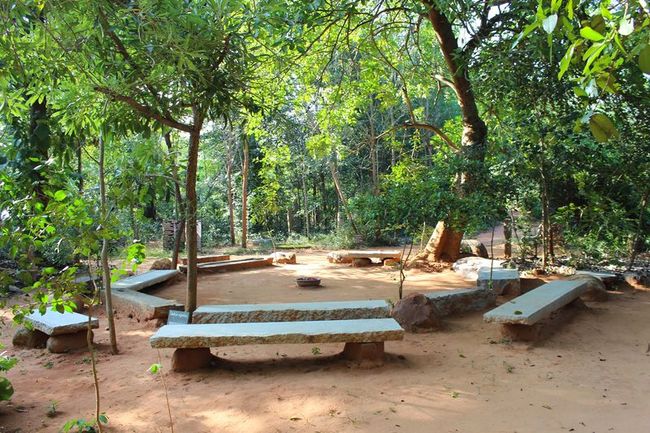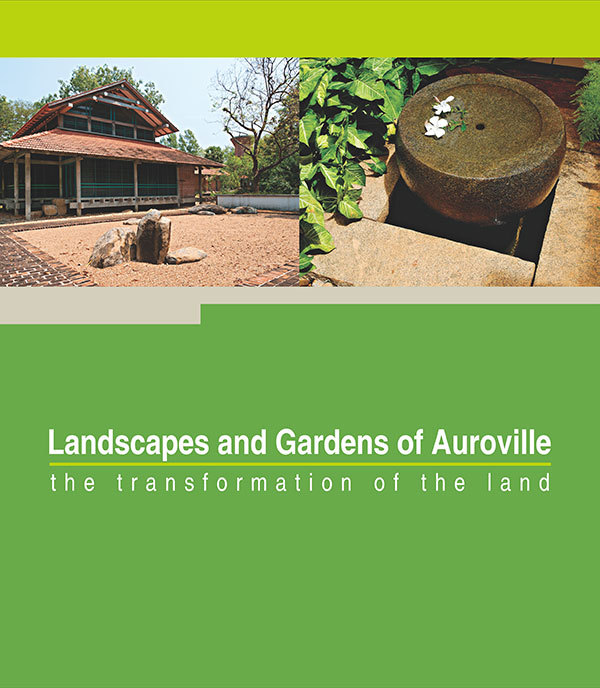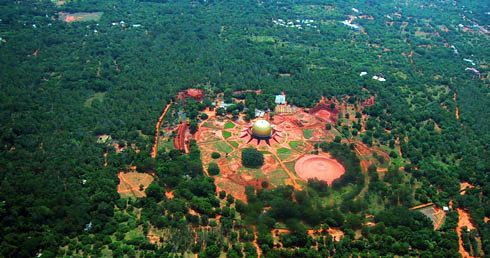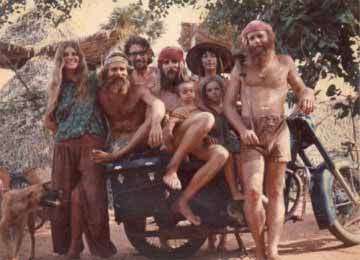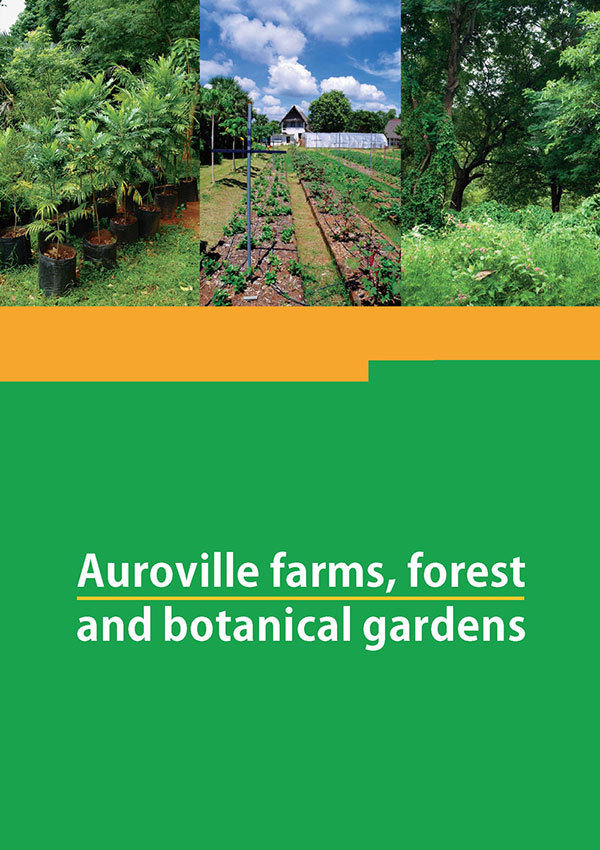Last updated:
Environmental work

Today it's difficult to pick up any publication without reading about the state of the environment. But the first Aurovilians, struggling in the late sixties, early seventies to gain a foothold on a scorched and almost barren plateau in south India, did not agonize over pH-levels, the destruction of the ozone layer or the greenhouse effect. They had no choice. They dug, they planted, they watered. And this basic, uncomplicated approach, taken up by many others and refined over the years, has made Auroville what it is today - a comparatively green and pleasant land which is the indispensable physical base for its dreams and its experiments.
Land of forests
India was a land of forests. Forests where heroes and bandits hid and lived in exile, forests that they journeyed through perilously, forests where sages lived and gathered their disciples around them.
Today these forests, once the wealth of a mighty land, are all but gone. From the foothills of the Himalayas to Cape Comorin less than 12% of India's land mass bears any form of tree cover. And despite a growing awareness of an ecological catastrophe in the making (20% of India's forest cover has disappeared since 1960), the destruction continues.
History of the area
Around two hundred years ago, also the Auroville plateau and its surrounding area was covered in forest. A stone was discovered in Kilianur dating from 1750 that described the local king hunting for elephants and tigers in the nearby forest. In 1825, trees were felled in the Jipmer area between Auroville and Pondy, to drive away the tigers.
Slowly the forests were cut down to build cities like Pondicherry and towns like Kalapet. Timber was used for export, and the British accelerated the process by allocating plots of land to anyone who would clear it and cultivate it for a year. Much of it was then left fallow and under the violent onslaught of the monsoon, erosion inevitably began.
The last remaining plots of forest in the Auroville area - 2,000 mature neem trees - were cut down in the mid-fifties for timber to make boats. In less than 200 years, what once had been forest had turned into an expanse of baked red earth scarred with gullies and ravines which had been carved out by the monsoon floods. Each year tons of the remaining topsoil were swept into the nearby Bay of Bengal.
Auroville's early trials and errors
The first needs that confronted Auroville's earliest settlers were for shade and water. However, it soon became clear that if the young seedlings were to survive, other measures had to be taken. They needed to be protected, for example, against marauding goats and cows, and some way had to be found to catch and control the monsoon rains so that they would not sweep away precious topsoil but would percolate into the water table. So 'bunds' (raised earth-banks to stop water flowing off the land)were born.
In these early years it was a process of trial and error, and many mistakes were made. For example, a massive dam erected near Forecomers broke in a heavy rain, because the water flow into the canyon was not controlled. Ten years later, in 1978, a freak rain of thirty cms in twelve hours broke bunds and washed away numerous young trees. The lesson learned that time was that bunding had to be systematic and comprehensive, beginning on the top of the watershed and following the topography of the land.
Afforestation campaign
Auroville's afforestation campaign began in the early 1970's. The first tree nurseries were started in Success and Kottakarai and, with the help of grants from the Point Foundation, the Tamil Fund and friends abroad, large-scale tree planting began. In the next ten years, as part of a massive soil and water conservation programme, over a million trees - timbers, ornamentals, fencing, fruit and fodder trees, nut trees etc.- were planted here. Some were exotic, like for instance the Australian 'Work Tree' (Mother's name for Acacia auriculiformis) which has adapted so well that it's now crowding out other species. As the trees grew, and micro-climates formed, many species of bird-life and animals returned, further accelerating the dissemination of seeds and enriching the environment.
Scientific monitoring
In 1982, impressed by the success of the afforestation project, the Department of Environment, Government of India, offered Auroville 11 lakhs of rupees (then around US $ 100,000) over five years to plant trees and scientifically monitor the results so that the most appropriate techniques and species for our situation - which is the situation of many other parts of India - could be identified. It was the beginning of a new orientation for greenworkers in Auroville, for now it became evident that Auroville had something precious to offer outside its own boundaries.
Work outside Auroville's boundaries
Aurovilian greenworkers have been increasingly going out into India to share their experience and help initiate new afforestation schemes. These have included projects with Tibetan refugees in Karnataka, with Irula tribesmen near Chinglepet in Tamil Nadu and a massive project, funded by the National Wastelands Commission, in the Palani Hills to reafforest large areas near Dindigul and Kodaikanal.
The Green Belt
A major part of the afforested area is situated in a green belt around the future city area, forming a buffer zone to protect Auroville from intrusion by the rapidly expanding suburbs of Pondicherry. This green belt is sparsely inhabited, mostly by caretakers of the now almost fully grown forest. The Forest Group meets every month to share information and to decide about allocation of funds (usually these are insufficient) for maintenance and afforestation and bunding of newly acquired plots of land.
Adapted from The Auroville Adventure
-

Sadhana Forest Community
-
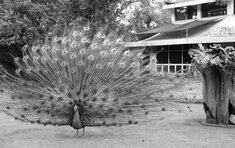
Gratitude Animal Farm
-
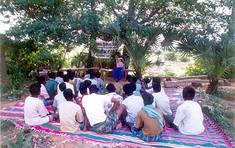
Aranya Forest and Sanctuary
-

Palmyra - Centre for ecological landuse and rural development
-
Forest Group
-
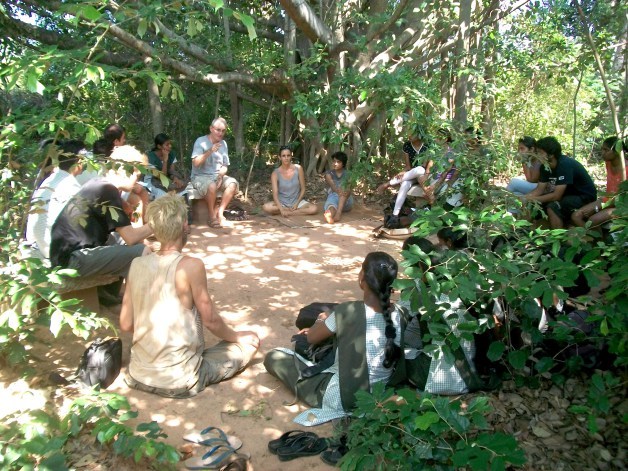
Pitchandikulam Forest and Bio-Resource Centre
-
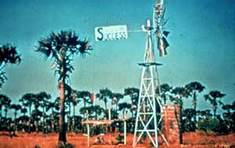
Success Sanctuary
-

Natural regeneration of vegetation
-

Hermitage
-
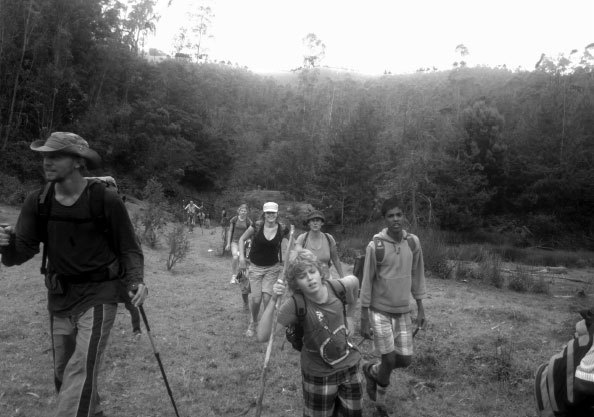
Auroville Nature Camp - Connecting to Nature and Each Other
